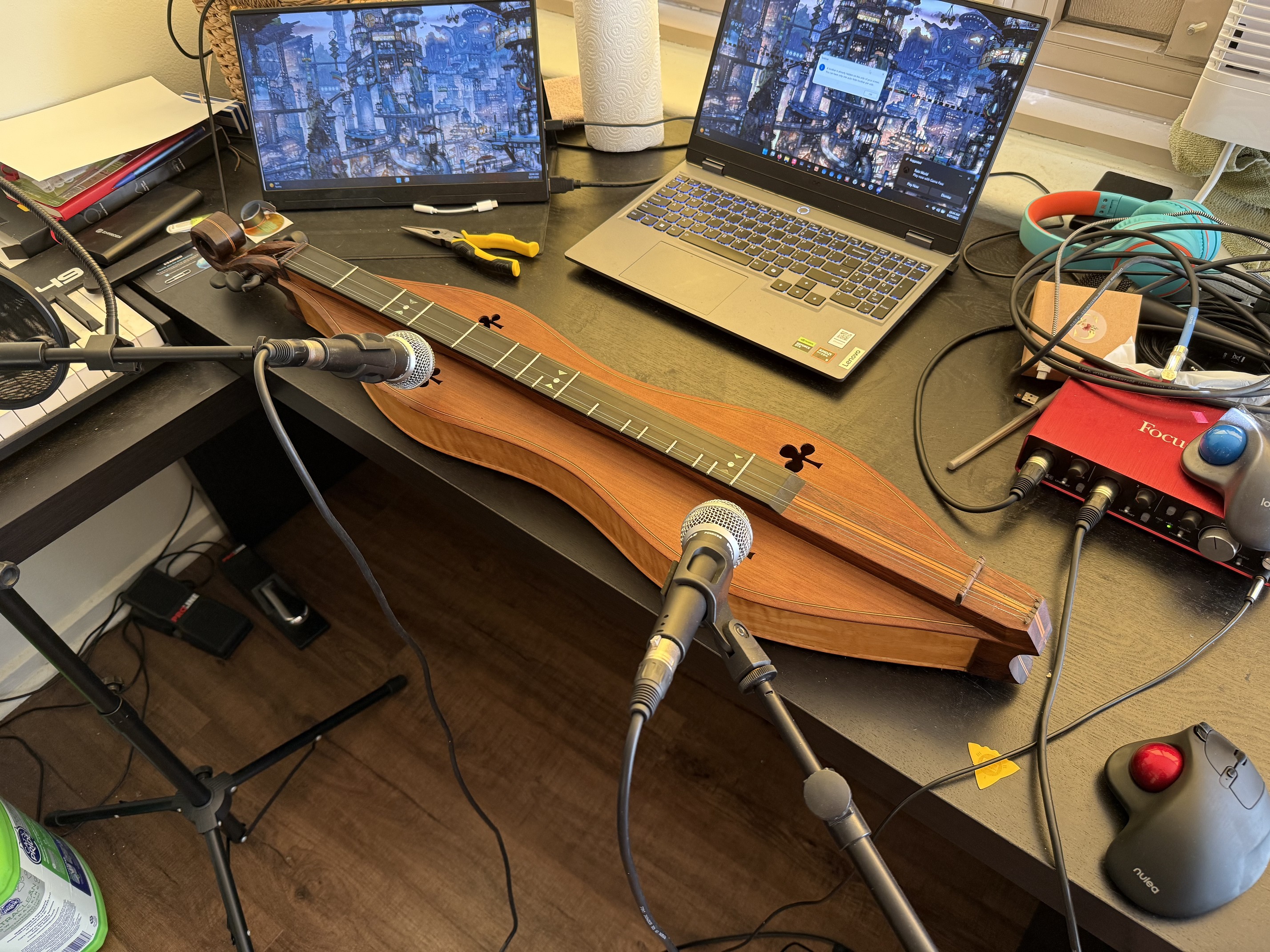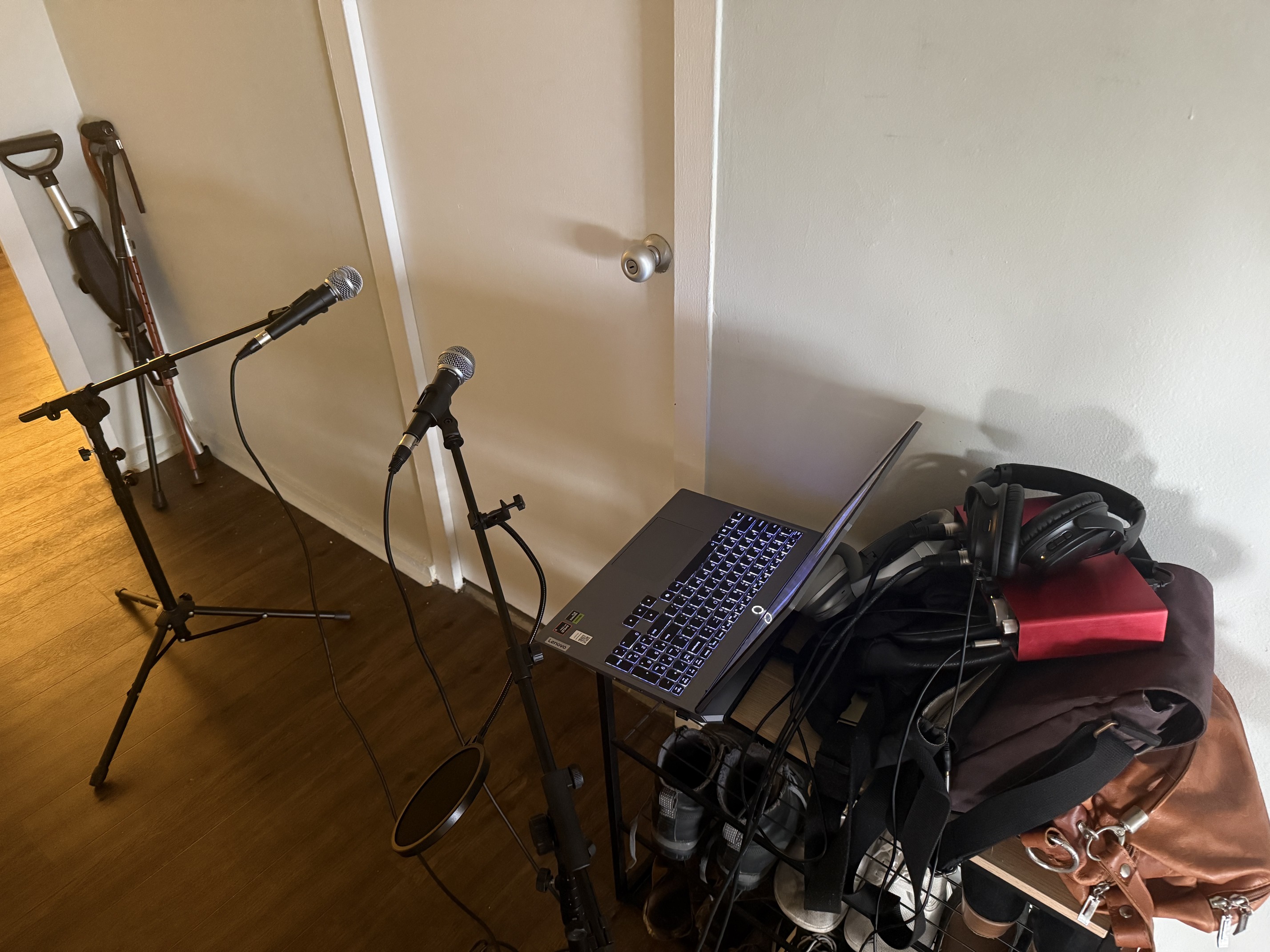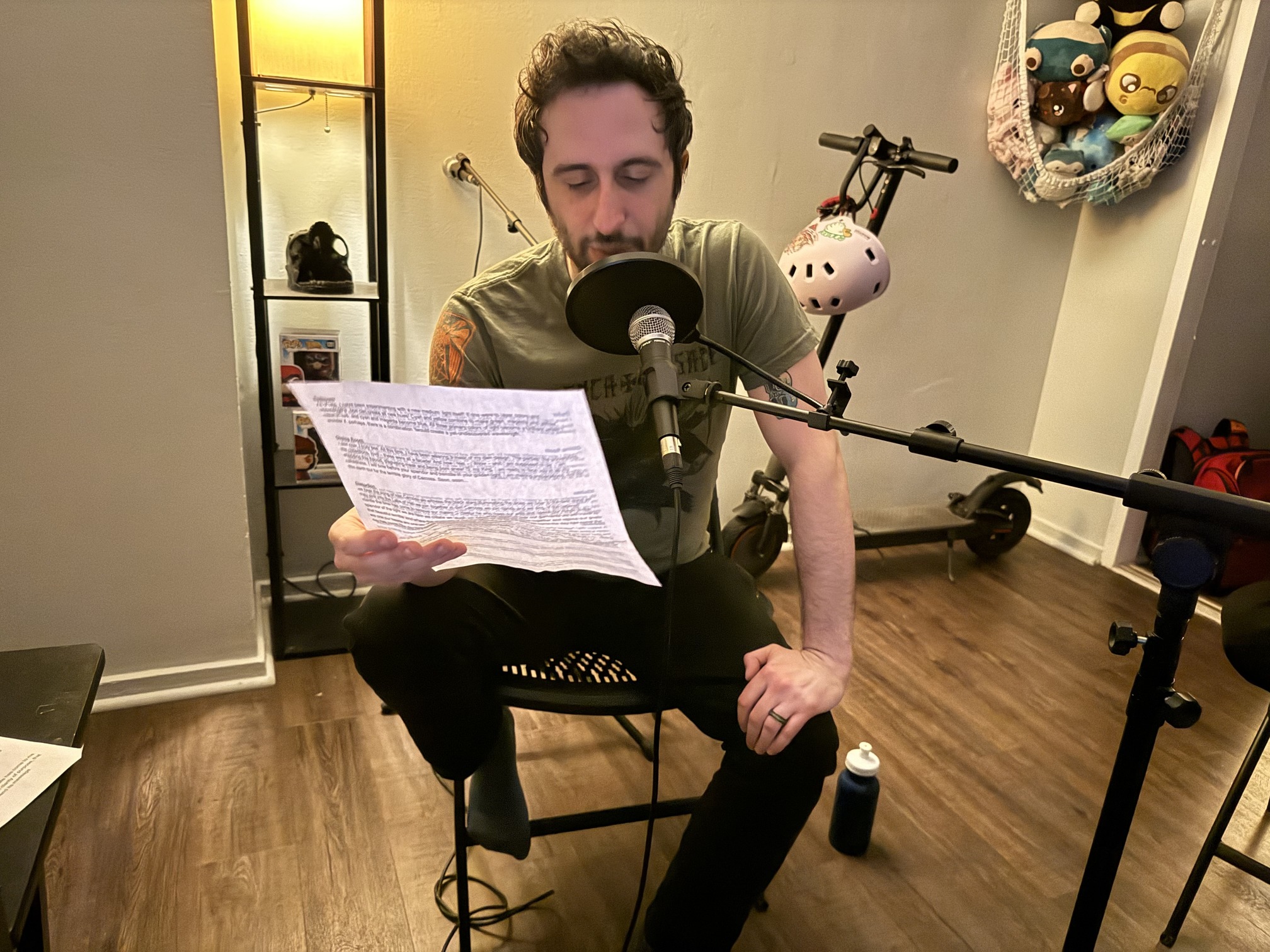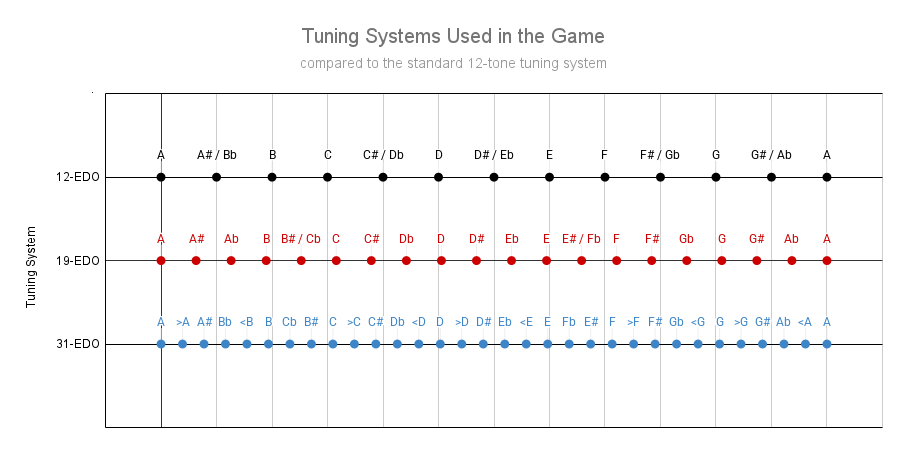Creating a Full Audio Experience for a Jam Game
Hi all!
I'm writing this to document my process for creating and implementing the audio for Uncle Henry Isn't Home. I had a blast working on this game and I really feel like I honed my audio abilities in a way I haven't quite experienced before. For this game I did every audio thing we could think of: music, voice lines, and sound effects. All of the music was written and produced by me, and all of the sounds and voice lines were recorded and processed by me. I used every ounce of musical and production and recording knowledge that I have, and I'm excited to share more about the journey with whoever reads this.
Pre-Jam Rehearsal
To prepare for the jam, I made something like 20 different track ideas over the course of 2 or so weeks. They started just for fun. I had gone back and listened to a track I had made for Charles Voita’s Lookers (the title track), which was atmosphere-horror-y, and I remembered how much fun I had exploring those emotions musically. And I figured, it was almost October, I should do something to get in the spirit of the season. So I made a couple spooky sounding tracks. I had recently began experimenting with microtonal music, and I figured with the dissonances and strange harmonies found there, a spooky vibe would be a fun way to explore these alternate tuning systems. (For those curious about microtonality, I go into more depth about it in the section Microtonal Music.)
At some point during the making of these songs, I started thinking of Chicaghoul coming up. I originally wasn’t planning on participating in this jam, but the idea of working on a horror game grabbed me. I’ve found in the past that I work best when I’m directed by someone with a strong creative vision of their own. I ended up finding that with my team, where Seren had the core idea that the game was built around, and I was intrigued, so I joined the team.
Recording Stuff
There were four recording sessions throughout the jam: sampling a mountain dulcimer, recording the voice acting, and two sessions of recording sound effects.
The mountain dulcimer was a stroke of luck. I know someone with a mountain dulcimer AND they happened to be in town during the jam AND they brought their mountain dulcimer AND they let me borrow it for 24 hours. So I recorded every note individually and loaded them up in a sampler so I could play it off my keyboard or by entering notes manually in with my mouse. Those samples became the main melody for the exploration theme and the credits music.

The first sound effects recording session was me recording random things around my apartment. Since I don’t have a field recorder, I set up two microphones on mic stands and moved them around the apartment, my laptop and audio interface (and associated cables) trailing behind. From these sessions, what got in the game was a light switch sound (the lock puzzle clicks and new log entry click) and the door sounds.

Up next was the voice acting session. About halfway through the jam, I recorded Seren’s husband, Jordan, performing the lines Seren had written for Uncle Henry. We recorded 10 “regular” lines and then one line for the distorted section at the end. For the distorted section we recorded multiple takes of both Seren and Jordan saying the line in vague unison, including takes from Jordan with an Irish accent and a take spoken in french.

Finally was the second sound recording session. During the jam I was also lucky to encounter a really squeaky wooden floor, and the owner of that floor let me come over and record it! They had a field recorder and a nice microphone, so it was a much easier time going around and recording sounds, and we recorded more various household sounds. The sounds from that session that made it into the game were the footsteps, and the oven door.
Microtonal Music
Heads up: this section gets into very light music theory, and goes pretty in-depth about microtonal music. I tried my best to write it in a way that makes sense for people who don't know music well, and if it doesn't make at least some sense, I'd appreciate if you mentioned so in the comments!
As stated above, I specifically went into the jam wanting to make microtonal music. For those who haven’t heard of or aren’t sure what microtonal music is, it’s music that has notes tuned between the standard 12-EDO system. It’s a broad category encompassing a lot of music from different cultures, and a lot of different ways of varying the tuning systems are possible. So far I’ve only experimented with EDO (Equal Divisions of the Octave) systems, where you take an octave and divide it equally into a certain number of notes.
I ended up using both a 19 tone tuning system (19-EDO) and a 31 tone tuning system (31-EDO). For the regular walking around music, I used 19-EDO, and for the title screen and credits music I used 31-EDO.

I wrote the walking around music first. For that one I mapped my midi keyboard to 12 notes that approximated 12-EDO, and played around until I found a theme that I liked. Then I took that, and for the second half of the track I repeated it but transposed it a third-step down (an interesting property of 19-EDO is that it's chromatic steps are third-steps instead of 12-EDO's half-steps), which makes for a really interesting effect of the music almost melting rather than changing keys.
For the distorted version of the exploration music, in the Distortion Realm section at the end (not the official name), I used a frequency shifter and slowly automated the shift amount to a lower and lower frequency, and then at the end of the loop I automated it to go up much faster, to match back up with the loop point. Frequency shifting is a weird, fun thing, and I explain in a much more technical way how it works in the Processing the Non-Music Audio section under the Group Vocals subsection. But in essence it takes all the notes of an audio clip, and makes the lower notes shift pitch further than the higher notes, and it's such a wild effect to mess with.
Next I wrote the credits music. This was the first 31-EDO track I wrote. I had just recently learned about the concept of neutral chords and I really wanted to try it out. In essence, the 31-EDO scale has two notes that roughly map onto minor and major thirds, and it has a note that lies exactly in between those two. That note in the middle of the minor and major thirds is called a neutral third (a fun side-fact is that if you go one note *above* the major, it becomes a supermajor, and same with minor, one note below becomes a subminor). As the name implies, it doesn't quite sound major and it doesn't quite sound minor, and it evokes subtly different emotions that are really interesting to me.
For this track I used the same melody from the exploration music, but I put it into a different chord progression (featuring a neutral chord at the start, which later resolves to the same chord but major) and a 3/4 time signature (instead of the exploration music's 4/4 time signature). I went into making this track with the expectation that this would be title screen music, but my team gave the feedback that it would work better as credits music (and they were so right!)
Then I wrote the *actual* title screen track. For that one I went for a more melancholy version of the theme. So I centered the track around a soft piano part. I took the same melody, time signature, and chord progression from the credits screen (with a modification, the neutral chord resolves to the same chord but minor instead of major for this one, to fit the more melancholy vibe I was going for). I also went a bit slower for this one than the credits music.
Processing the Non-Music Audio
Another heads up: this section is fairly technical. I've included it for those who are interested, but if you don't know (and more importantly don't care) about audio production, you can safely skip it. Or you can read it anyway, I don't care, I'm not your mom
Processing the Voiceover Lines
For the voiceover lines, I processed them like I would process regular voice audio, a couple compressors here, some light EQing there. In addition to the regular processing, I put a light room reverb on it to give it a sense of space, a high-pass and low-pass filter (with a resonant spike in the middle), and a vinyl crackle sound to make it sound like from the era of records. I used more or less the same process for each voiceover line, slightly adjusting the compression and gain to make the loudness match across each one (about -14 LUFS).
The Group Vocals
The group voice at the end of the game includes five separate recordings, all saying the same line in (approximate) unison. I processed each one similarly to the first step of processing the regular voice lines, with a couple of compressors on each track. I then took the group as a whole, added a mix of a room reverb and a large hall reverb, slowly automated the gain from 0 to decently high on the mid and high bands of a multiband saturation plugin, and then ran all that through the same high-pass/low-pass/resonant-spike filter I ran the regular dialogue through. Then came the special sauce: I took the audio, split it into two parallel pathways, and on one pathway automated the frequency amount on a frequency shifter to where it moved downward slowly over the course of the line, and on the other pathway automated the pitch of a pitch shifter to move slowly upward.
The difference between a pitch and frequency shifter is what made this sound so otherworldly. A pitch shifter is like, well, have you ever messed around with a tape machine or turntable (or direct audio file in something like audacity) and ever sped up or slowed down the track, and noticed that the pitch of the song goes up when fast, and down when slow? Pitch shifting is basically that, but without changing the speed. In other words, pitch shifting shifts all the pitches equally: if a low note moves up by 3 steps, then a high pitch moves up by 3 as well.
A frequency shifter works very differently, however. It takes each individual *frequency* and shifts it by a certain frequency amount. I won't go into too many details about the difference between pitch and frequency here, but the gist is that when pitch goes up at a steady rate, frequency goes up by a faster and faster rate the higher you go. Another way of putting it is that the higher you go, the larger frequency difference you need to go up the same pitch amount. The effect that a pitch shifter has is that if you shift the frequency of a full sound or track by, say, 20Hz, then low notes will move very far away from their original position, and high notes will move only slightly from their original position. And it's not actually shifting individual notes, it's shifting the frequencies within the note. If you have, say, a square wave, which has lots of high frequency harmonics, and frequency-shift it, the fundamental frequency (the core of the note) will shift farther than the harmonics will. And the larger the frequency shift amount, the larger this discrepancy is. And it sounds so *weird* and I love it so much.
Anyway, I haven't even finished the processing chain for the group voices! After going through this wild step of double-shifting in opposite directions, the processing goes through another compressor, an EQ and gain that's automated over the course of the audio to compensate for the increasing impact of the automated distortion and pitch shifting, and then finally a pitch shifter, that slowly shifts the pitch up and down using an LFO (at approximately 0.5Hz, or about 2 seconds for each cycle up and down), with the intensity of this shift up and down being automated to be more intense as the clip goes on. And then there's a limiter just to be sure.
The Sound Effects
Processing the sound effects was way simpler than processing the voiceovers (at least, more simple than the group audio). I basically added a compressor or two, depending on the sound, and a room reverb to add a sense of shared space, to compensate for sounds that were recorded in different rooms. The only involved part really was listening to the whole session and picking out the best sounds for each object/sound I wanted.
In Conclusion
Okay, so I'm really happy with my work I've done for this jam. I pushed myself to do something I hadn't much experience with. I stayed within the scope of what I could do in a single three week period (While I'd love to keep working on music and sounds like this if we expand the game, I feel like I made everything I wanted to and the result was satisfying and a complete thematic and narrative package). I didn't *under*scope, I don't think I could have pulled more audio out of the three week period and have been as happy with it. Really, I'm so happy with the game we all on the team created. We all met together and used our individual skills to fulfill a creative vision we were all excited about. It's something I really enjoyed making, I enjoy playing, and I hope you all enjoy it too.
Files
Get Uncle Henry Isn't Home
Uncle Henry Isn't Home
Find Uncle Henry. Lose yourself.
| Status | Released |
| Authors | Jergling, Seren Briar, spacedani2, Francisco del Valle |
| Genre | Adventure |
| Tags | Atmospheric, chicaghoul2025, Escape Game, First-Person, Horror, Indie, Point & Click, Singleplayer |
More posts
- Arcade Mode! (no, not like that)30 days ago
- Baby's First Video Game: Seren's Postmortem44 days ago
- Showcase Update48 days ago
- Jergling's Postmortem51 days ago

Comments
Log in with itch.io to leave a comment.
Nice to come across something in itch.io’s devlogs section about the behind the scenes that isn’t just a brief changelog 👍
You like learning how indie games are made, you sicko?
Good. Thank you for stopping by. Don't forget to check out the rest of Chicaghoul 2025.